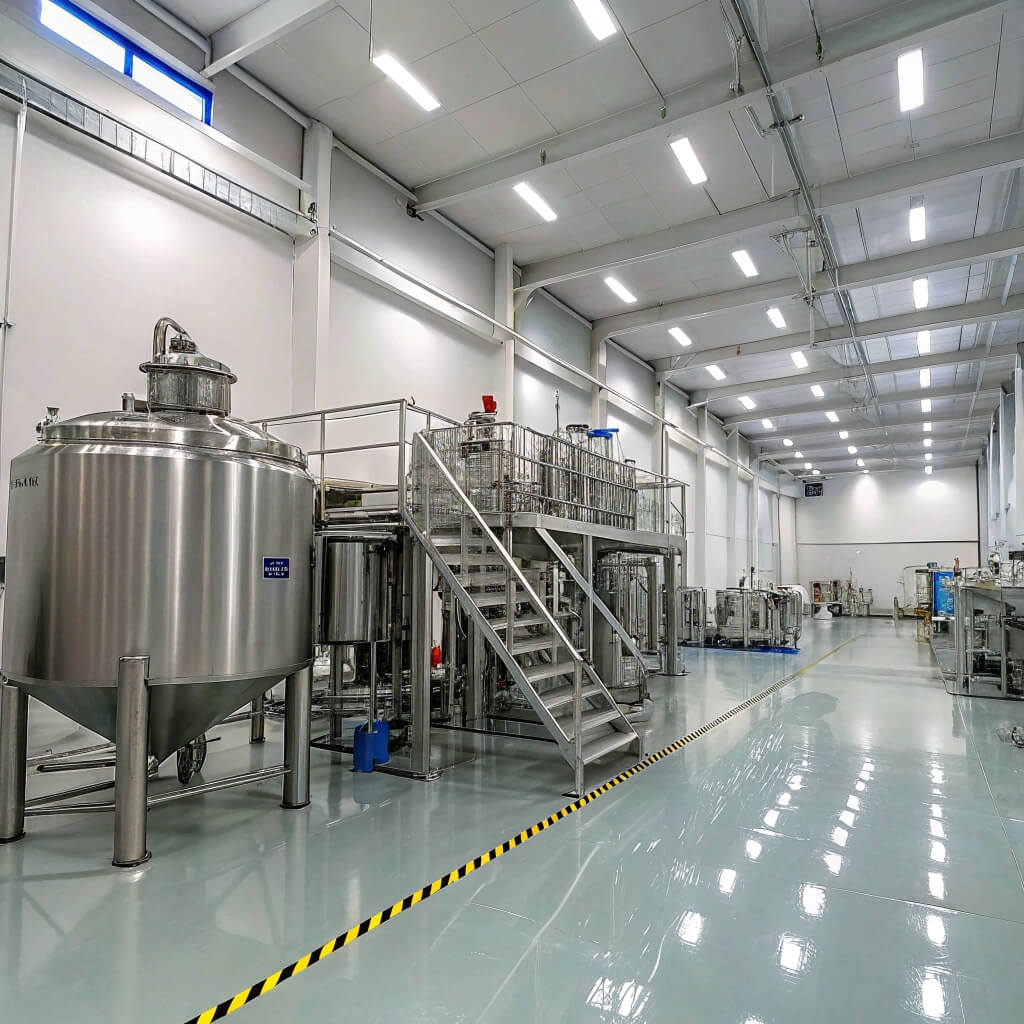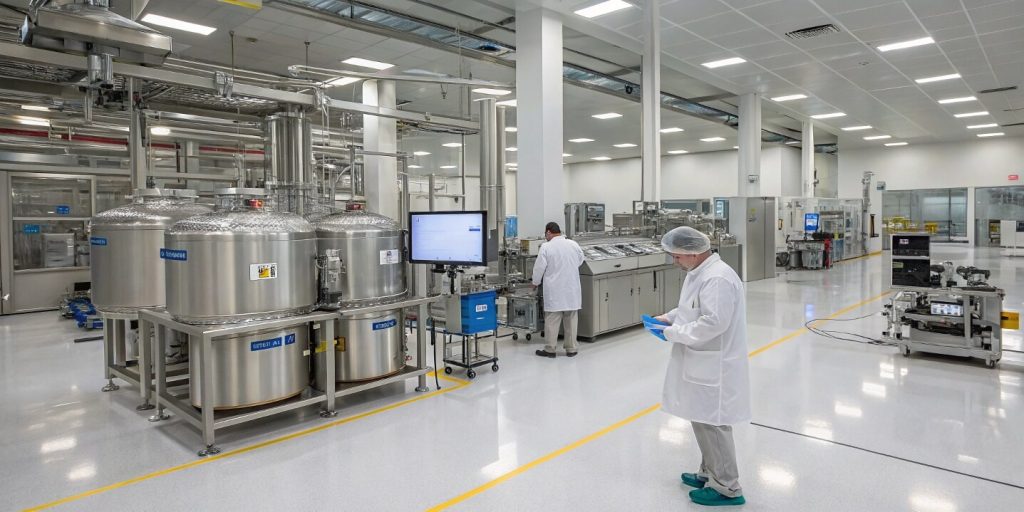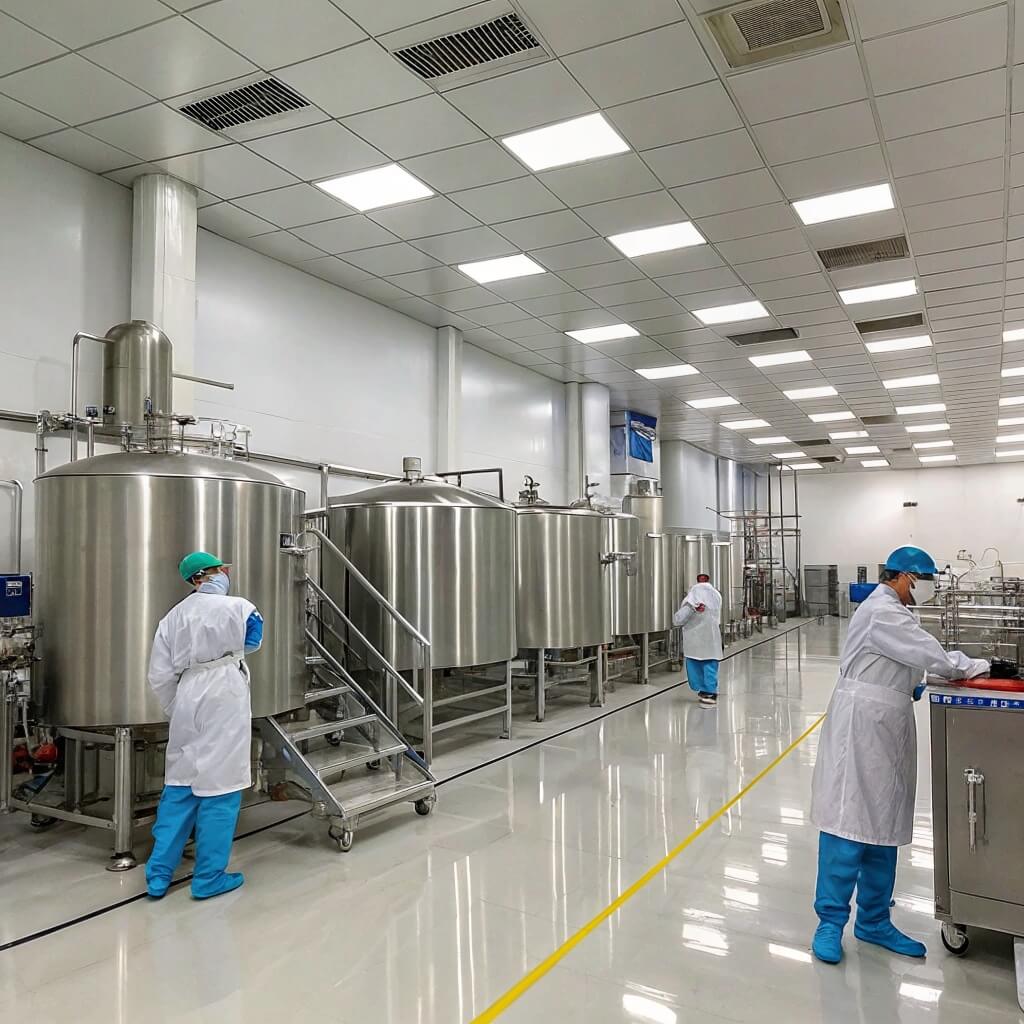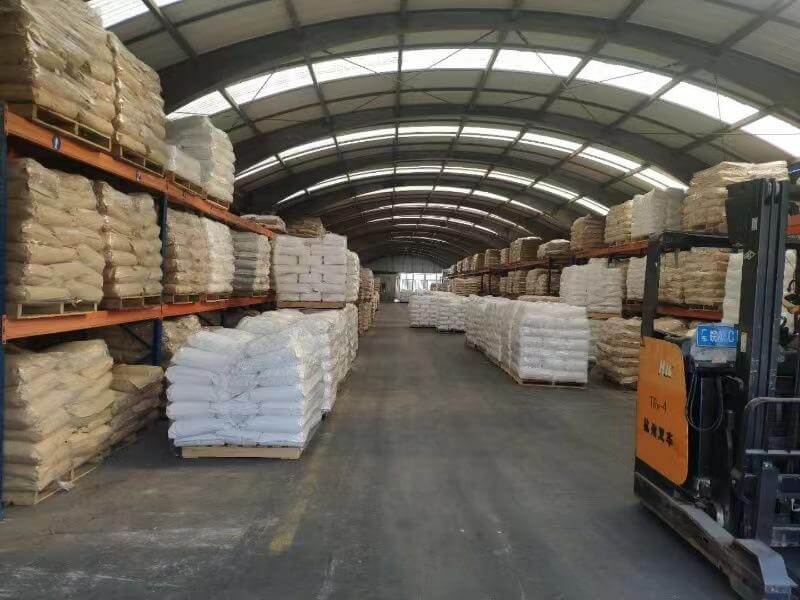Selecting the correct grade of Hydroxypropyl Methylcellulose (HPMC) is critical for ensuring optimal performance in various industrial applications. The wrong grade could compromise the quality, stability, and effectiveness of your product.
HPMC is used in various industries like construction, pharmaceuticals, food, and cosmetics. Choosing the right grade is essential for achieving the desired outcome in each application. This guide will walk you through the key factors influencing HPMC grade selection, helping you make an informed decision based on your specific needs.
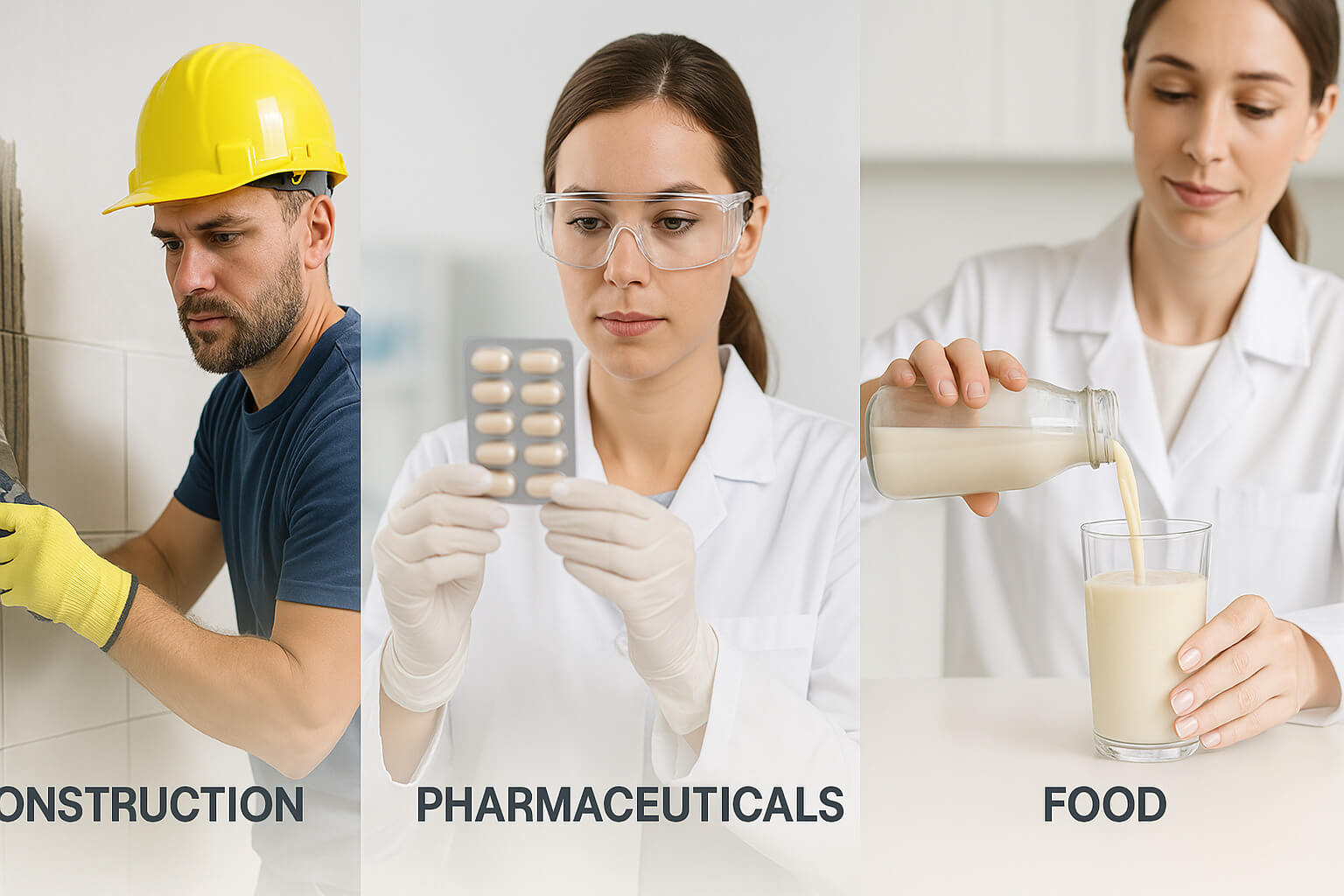
Image illustrating different HPMC grades and their applications in various industries.
In this article, we’ll explore the types of HPMC used in different industries, the effect of viscosity on performance, and how molecular weight and substitution degree influence product selection. By the end, you'll have a clear understanding of how to choose the right HPMC grade for your application.
What Is HPMC Used For in Construction, Pharma, Food, and Cosmetics?
Hydroxypropyl Methylcellulose (HPMC) is a versatile cellulose ether widely used across various industries. In construction, it enhances water retention and workability in mortars. In the pharmaceutical industry, it is used as a binder, film-former, and controlled-release agent for tablets. In the food industry, it serves as a stabilizer, thickener, and emulsifier, particularly in gluten-free products. In cosmetics, HPMC is used in products like shampoos, lotions, and creams for its thickening and emulsifying properties.
Each industry requires a specific grade of HPMC to perform optimally. The grade of HPMC influences its function, from thickening to water retention, and even acting as an emulsifier. Therefore, understanding your product's end-use helps you select the best grade.
In construction, HPMC helps increase the bonding strength and consistency of mortars, tile adhesives, and coatings. Pharmaceutical-grade HPMC is used for tablet formulations due to its excellent binding properties and ability to control drug release. In the food sector, HPMC helps in stabilizing emulsions and improving the texture of gluten-free foods. In personal care, its role is to provide smooth textures and improve the consistency of lotions and shampoos.
Key Applications of HPMC Grades
| Industrie | HPMC Grade Usage |
|---|---|
| Construction | Mortar, tile adhesive, plaster, and coatings |
| Pharmaceutique | Tablet binder, film coating, controlled release |
| Nourriture | Thickener, emulsifier, stabilizer for gluten-free |
| Produits de beauté | Thickener, emulsifier, stabilizer in lotions, creams |
How Does HPMC Viscosity Affect Performance and Selection?
Viscosity plays a significant role in determining the performance of HPMC in various formulations. It affects everything from the workability of mortars in construction to the stability of food emulsions. Higher viscosity often enhances water retention and adhesion in construction materials, while lower viscosity may be desirable in tablet coatings to ensure smooth film formation.
Viscosity is directly tied to HPMC's effectiveness in each application. Selecting the right viscosity grade ensures the product performs optimally in both the manufacturing process and end-use application.
In the construction industry, higher viscosity grades are preferred for products that require better water retention and improved bonding strength. For tile adhesives, for example, viscosité plus élevée[^1] provides better grip and adhesion. In contrast, lower viscosity HPMC grades are used for general-purpose mortars where the goal is a smooth, easy application with less resistance to flow.
[^1]: Exploring this link will provide insights into how higher viscosity enhances water retention and bonding strength in construction materials.
Pharmaceutical formulations require HPMC with specific viscosity to achieve optimal tablet integrity and controlled release. The viscosity of HPMC affects its binding ability, tablet disintegration time, and release profile.
How to Choose the Right Viscosity Grade?
| Application | Recommended HPMC Viscosity Grade |
|---|---|
| Mortar, Tile Adhesives | High viscosity (e.g., HPMC K100M) |
| Comprimés pharmaceutiques | Medium viscosity (e.g., HPMC E5) |
| Food Emulsions | Low viscosity (e.g., HPMC K4M) |
What Are the Differences Between HPMC Grades Like K4M, E5, F50?
HPMC grades differ based on their molecular weight, degree of substitution, and intended use. For example, HPMC K4M, E5, and F50 each have different characteristics that make them suitable for specific applications in construction, pharmaceuticals, and food.
Understanding these differences is crucial to selecting the right HPMC grade for your formulation. Each grade varies in terms of viscosity, water retention, and binding properties, which makes them more or less suitable for various applications.
- HPMC K4M: This grade is ideal for general-purpose applications like mortars and adhesives. It offers medium viscosity and good water retention properties.
- HPMC E5: Used primarily in pharmaceutical applications for tablet binding and coating, this grade provides controlled viscosity and enhanced binding properties.
- HPMC F50: This grade is often used in specialized formulations, such as controlled release drugs, due to its unique molecular structure and ability to maintain stability over time.
| Qualité HPMC | Plage de viscosité | Common Use Case |
|---|---|---|
| HPMC K4M | Low to Medium | Mortars, adhesives |
| HPMC E5 | Moyen | Pharmaceutical tablet binding |
| HPMC F50 | Haut | Controlled release drugs |
Which HPMC Grade Should You Use for Mortar, Tablets, or Gluten-Free Foods?
Selecting the right HPMC grade depends on the specific needs of your product. Different grades provide varying levels of viscosity, water retention, and stability. Mortar formulations, for example, require a grade with high viscosity for better bonding strength, while tablet coatings need a grade with the right balance of viscosity and binding properties for proper disintegration.
Understanding the specific requirements of your application helps you make the best HPMC selection. Here's a guide to help you choose the right grade for different needs.
- Mortar: For high-performance mortars, HPMC K100M or similar high-viscosity grades are ideal.
- Tablets: Pharmaceutical-grade HPMC such as E5 or F50 works best for tablet binding and controlled release formulations.
- Gluten-Free Foods: For food formulations, HPMC grades like K4M are suitable as they offer low viscosity while providing excellent emulsifying and thickening properties.
| Application | Qualité HPMC recommandée |
|---|---|
| Mortar | HPMC K100M |
| Tablets | HPMC E5, F50 |
| Gluten-Free Foods | HPMC K4M |
How to Evaluate and Compare HPMC Grades Based on Standards and Regulations?
To ensure quality and consistency, it is essential to evaluate HPMC grades based on industry standards and regulations. Pharmaceutical-grade HPMC must meet USP or Ph.Eur. standards, while construction-grade HPMC should comply with local building material regulations.
Regulatory compliance ensures that the HPMC you choose meets safety and performance requirements. This section covers the key standards you should consider when selecting HPMC for your specific application.
- Pharmaceutical Grade HPMC: Must meet the United States Pharmacopeia (USP) or European Pharmacopoeia (Ph.Eur.) standards.
- HPMC de qualité alimentaire: Should be compliant with FDA regulations for food additives, ensuring safe use in food products.
- Construction Grade HPMC: Compliance with local building material standards is critical to ensure performance under real-world conditions.
| Industry Standard | Organisme de réglementation | Compliance Requirement |
|---|---|---|
| Pharmaceutique | USP, Ph.Eur. | High purity, controlled release |
| Nourriture | FDA, EFSA | Safe for consumption, thickening agent |
| Construction | Local building codes | Water retention, adhesion, stability |
FAQ
What factors influence the selection of HPMC grades for industrial applications?
Factors such as viscosity, molecular weight, and the degree of substitution (DS) affect HPMC selection. For example, high-viscosity grades are used in adhesives and mortars, while lower viscosity grades are better for applications like tablet binding or food emulsifying.
How do molecular weight and substitution degree affect HPMC performance?
Molecular weight determines the viscosity of HPMC, with higher molecular weights generally leading to higher viscosity. The degree of substitution (DS) affects water retention and solubility, influencing its application in various formulations.
What are the key considerations for ensuring HPMC compliance with industry standards?
To ensure compliance, it’s important to check for adherence to regulatory standards such as USP for pharmaceutical applications or FDA standards for food-grade HPMC. Compliance guarantees that the product is safe and effective for its intended use.
How can one assess the quality and consistency of different HPMC suppliers?
Assessing HPMC suppliers involves evaluating their adherence to quality standards, the consistency of their product batches, and their ability to provide reliable testing reports. Supplier reputation, production stability, and customer service also play a role in the evaluation process.
Conclusion
Choosing the right HPMC grade is crucial for ensuring the success of your formulation. By considering the application needs, regulatory compliance, and performance characteristics, you can select the optimal grade for your product.

